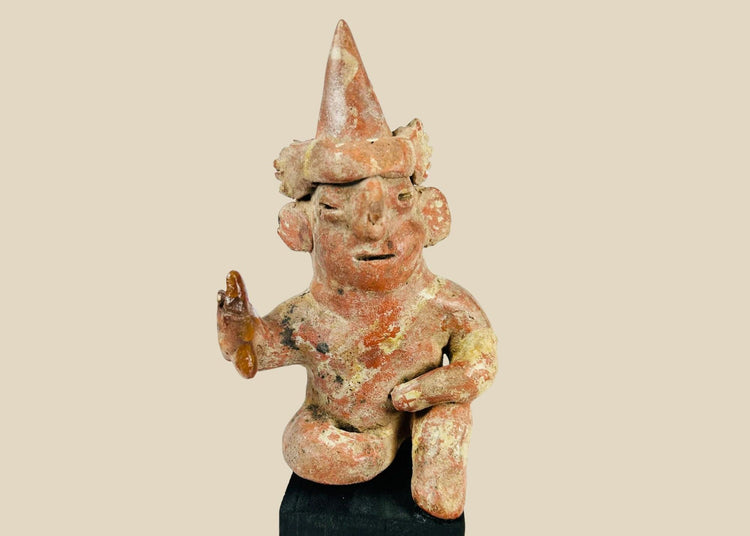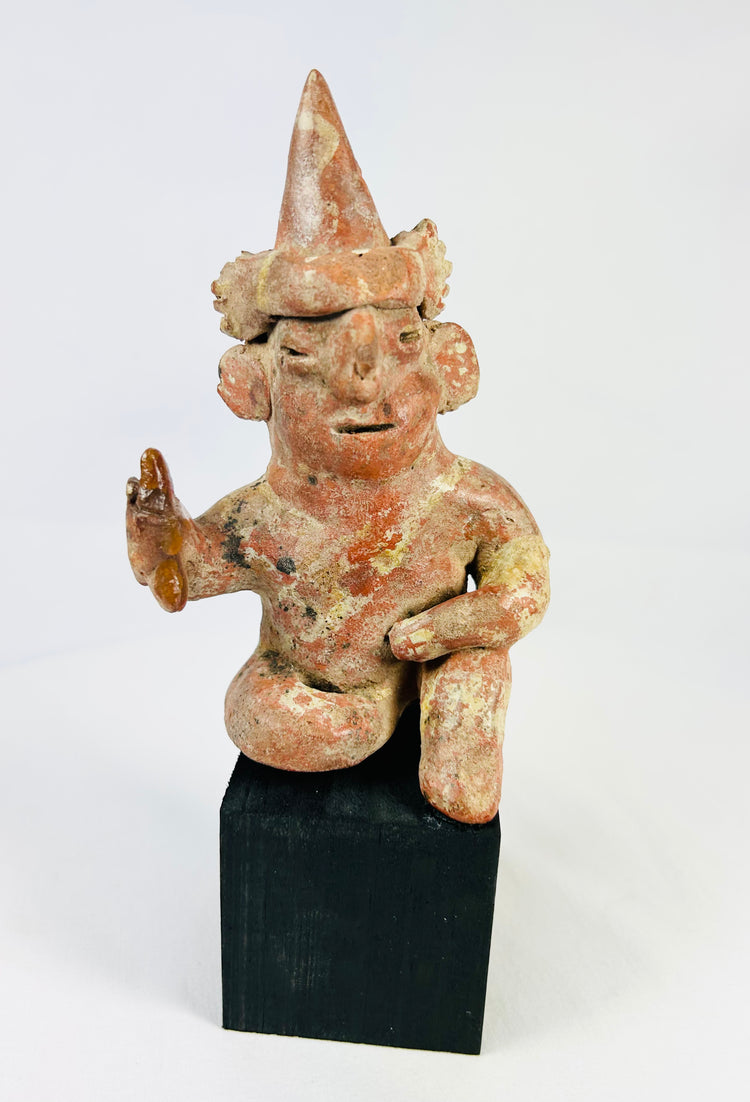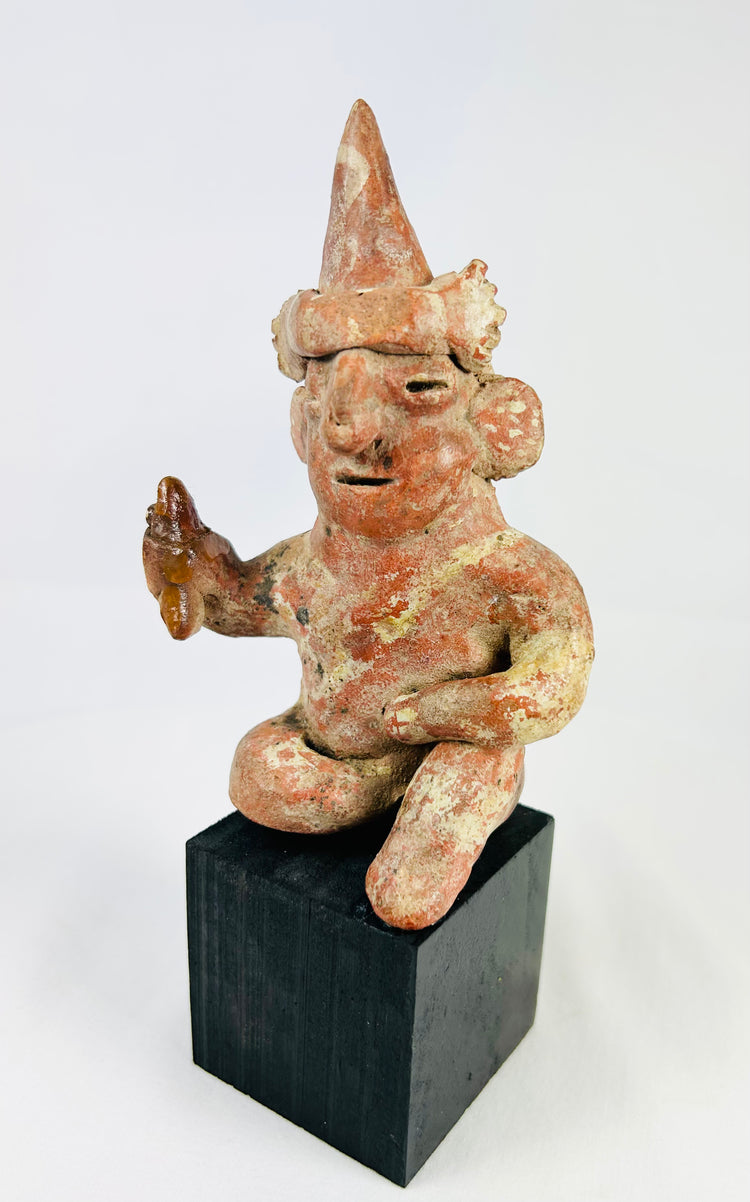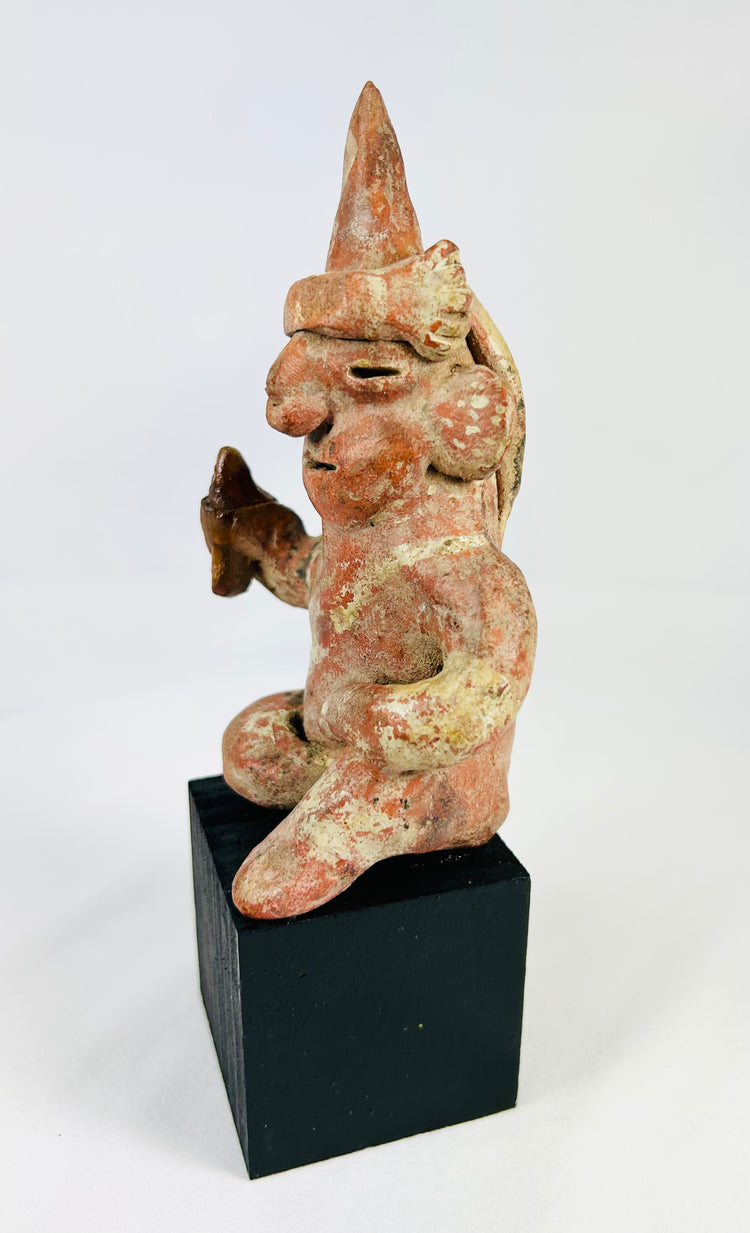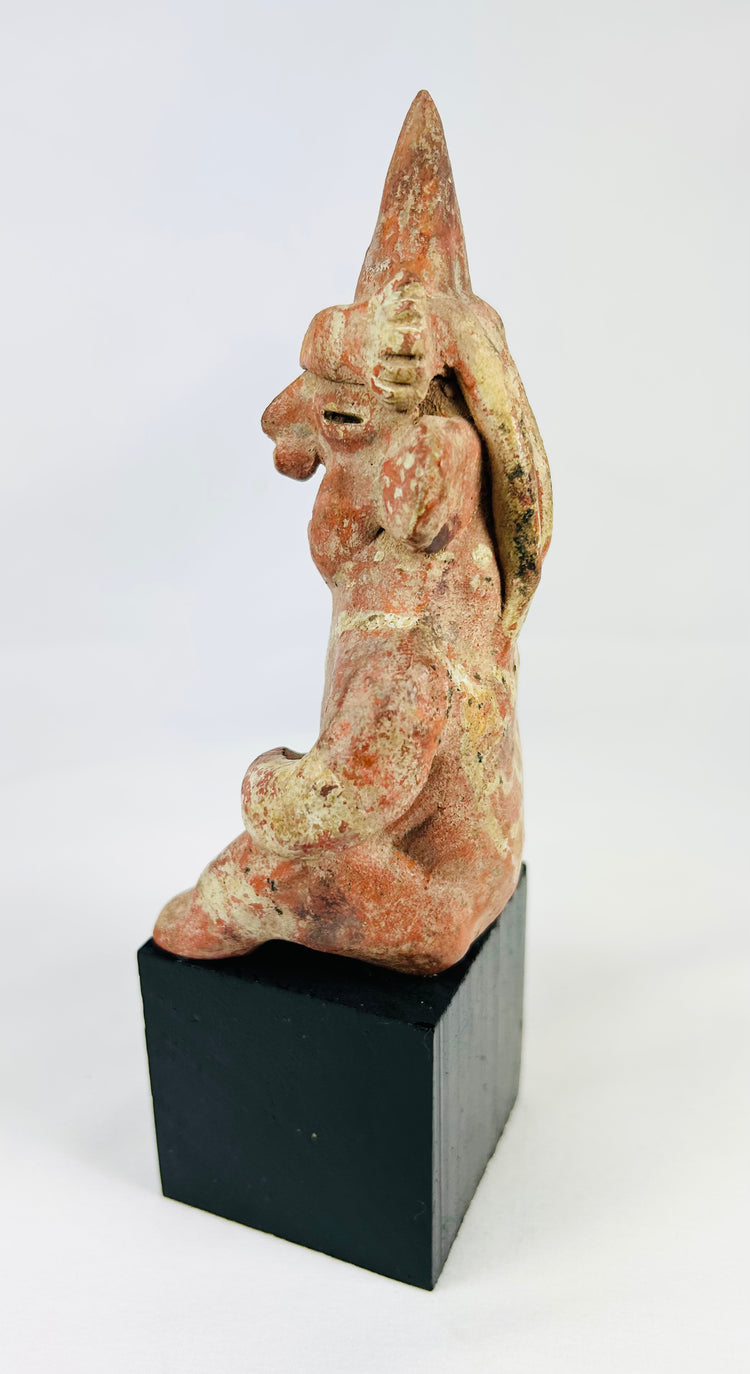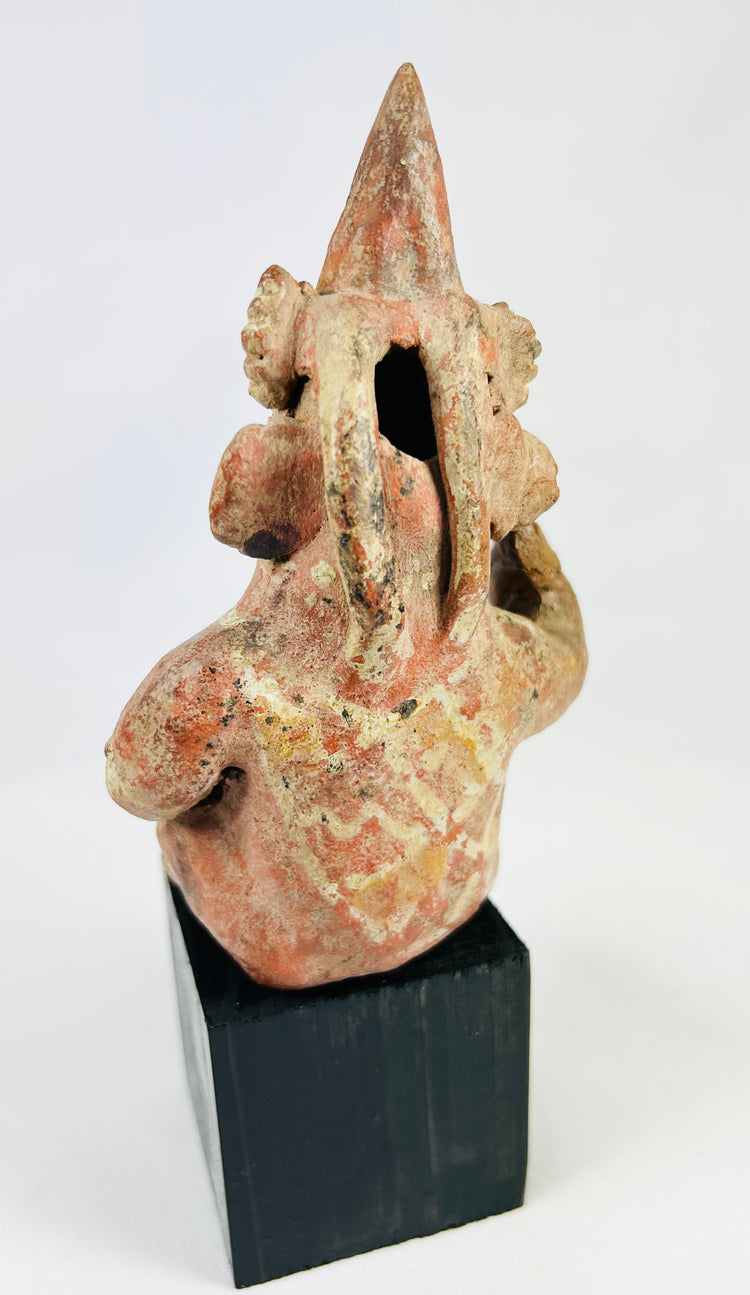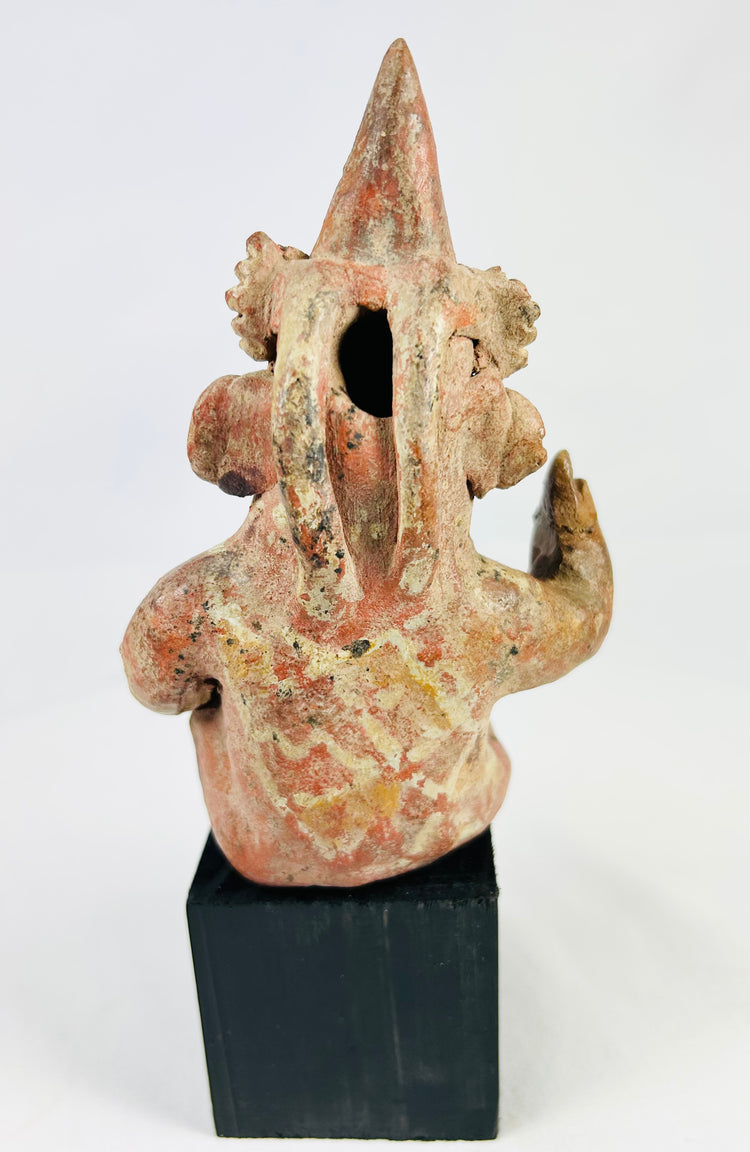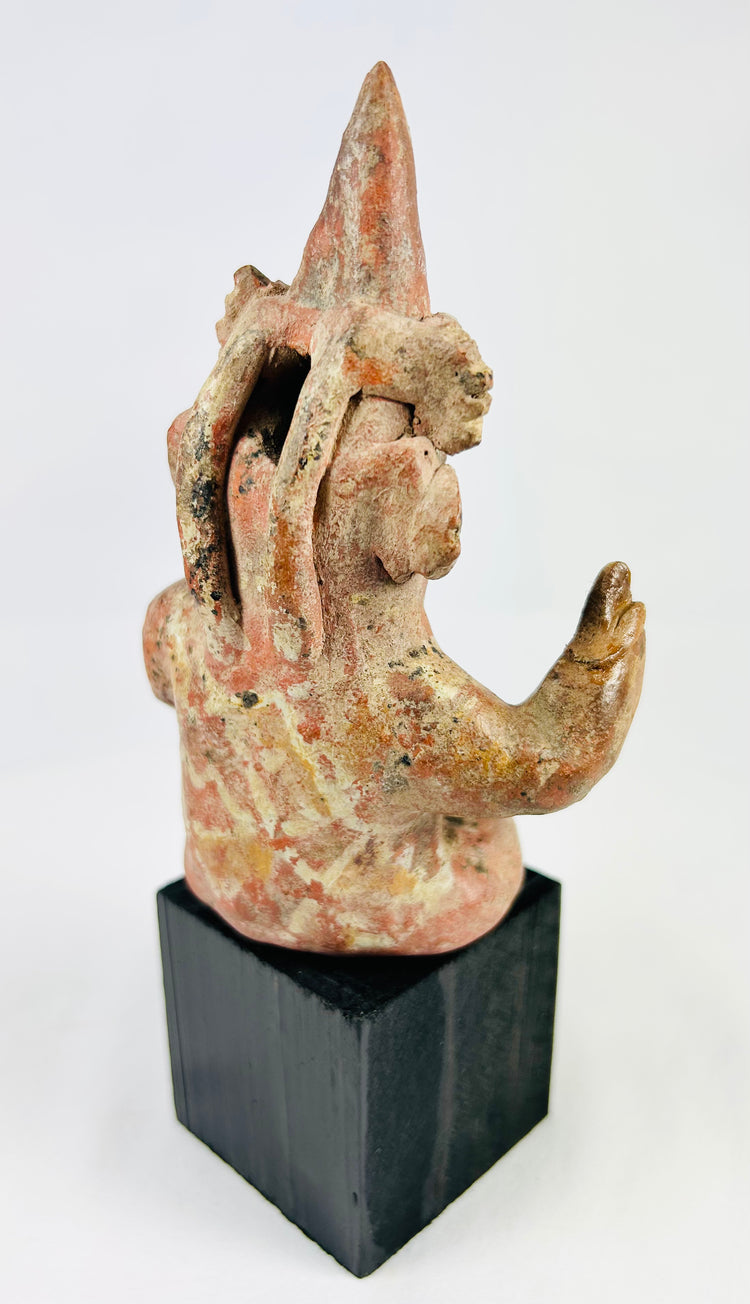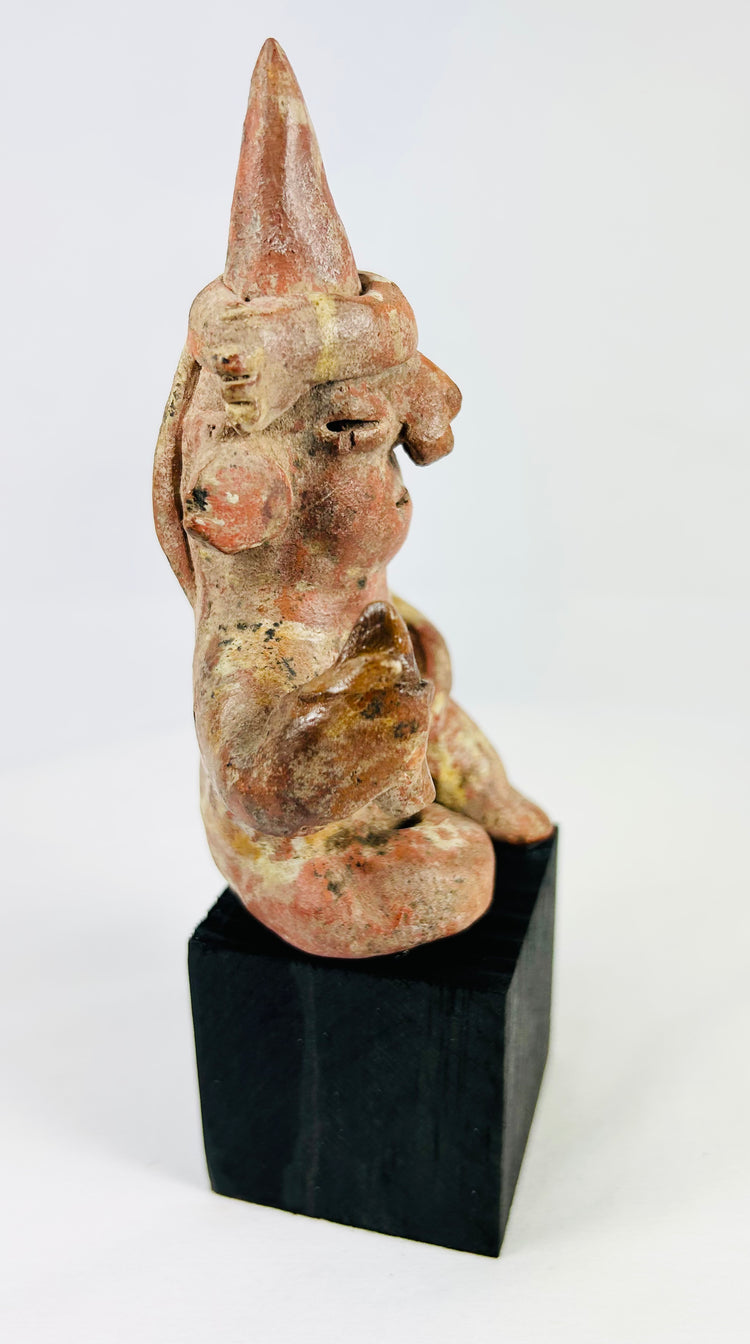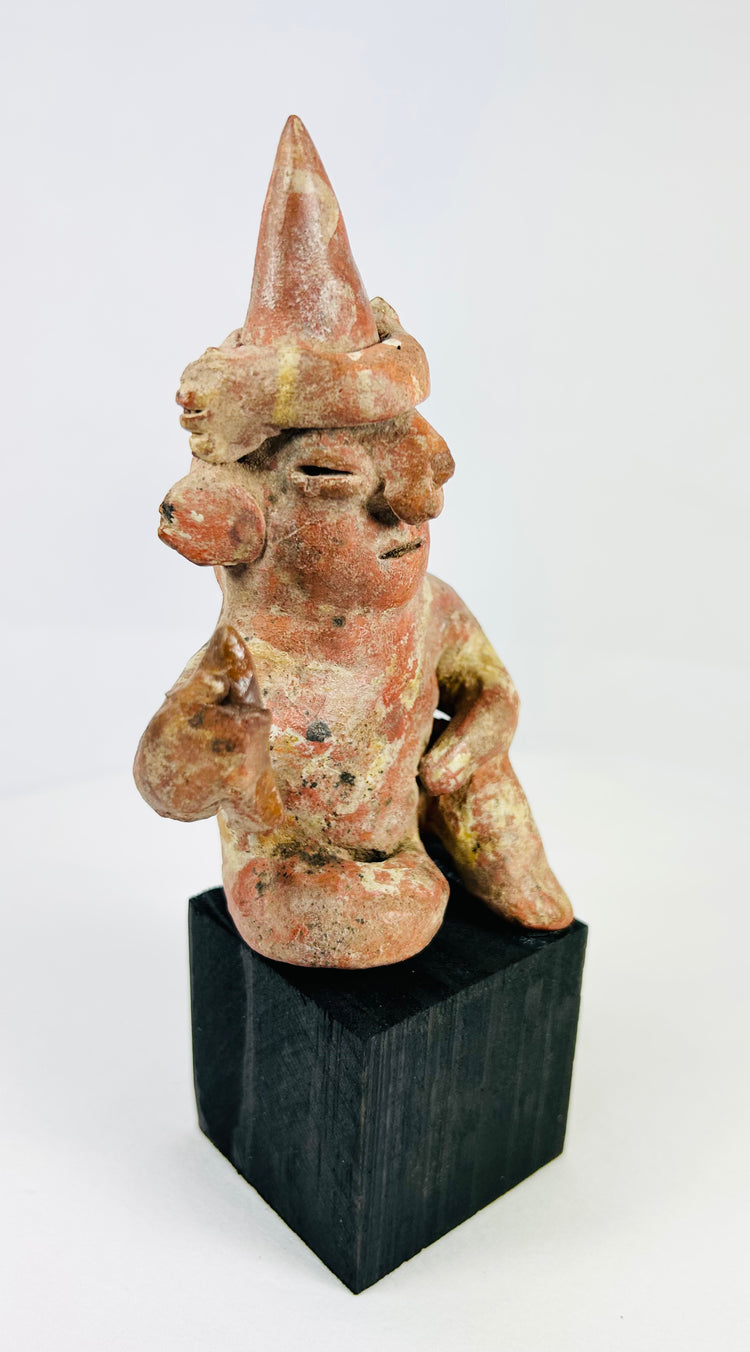Nayarit Seated Figure with Tall Cone Headdress | West Mexico | Circa 100 BCE–300 CE
Description
More
Less
Historical Context & Origin
Region: West Mexico, Nayarit (Shaft-Tomb tradition, likely Ixtlán del Río area)
Material: Hollow terracotta with red/cream slips and mineral accretions; mounted on a modern wood display block
Period: Late Formative to Early Classic, ca. 100 BCE – 300 CE
Description
Expressive West Mexican seated figure modeled with a tall conical headdress bound by a wide turban-like band and flanked by large earspools. The figure sits with one leg tucked and the other forward, the right arm raised holding a small object (rattle/scepter/food item) and the left arm resting across the knee—classic storytelling or ritual pose.
Surfaces retain areas of original red-orange slip with white pigment highlights, now softened by age with root marks and mineral encrustations. The back shows the expected vent/firing aperture at the base of the headdress and openwork tresses, consistent with hollow construction of Nayarit ceramics. Facial features are rendered with a prominent nose and narrow slit eyes; the form and posture closely parallel the cone-cap personages of the Nayarit Ixtlán del Río type.
Presented on a modern black wood block stand (included).
Features
- West Mexican Nayarit seated figure with tall conical headdress
- Hollow-molded terracotta with remnants of red/cream slip
- Large earspools, turban band, and raised right hand holding an attribute
- Authentic age indicators: mineral accretions, root staining, firing vent at back
- Custom modern stand for display
Cultural Significance
Figures of this type were placed in shaft-tomb burials in West Mexico and likely represented ancestors, attendants, or ritual specialists (often interpreted as shamans or dancers). The distinctive high cone headdress is a hallmark of the Nayarit corpus.
Condition
Good archaeological condition with expected age wear: scattered surface losses and abrasions to slip and pigments, minor stable fissures, and earthen/mineral deposits throughout. A small area to the raised hand appears darker from ancient firing or old handling/wear; overall structurally sound and presents beautifully.
Dimensions (approximately)
Height: 7 in
Width: 2 in
Depth: 2 in
Age
Ca. 100 BCE – 300 CE, West Mexican Shaft-Tomb tradition (Nayarit, Ixtlán del Río type)
Description
Historical Context & Origin
Region: West Mexico, Nayarit (Shaft-Tomb tradition, likely Ixtlán del Río area)
Material: Hollow terracotta with red/cream slips and mineral accretions; mounted on a modern wood display block
Period: Late Formative to Early Classic, ca. 100 BCE – 300 CE
Description
Expressive West Mexican seated figure modeled with a tall conical headdress bound by a wide turban-like band and flanked by large earspools. The figure sits with one leg tucked and the other forward, the right arm raised holding a small object (rattle/scepter/food item) and the left arm resting across the knee—classic storytelling or ritual pose.
Surfaces retain areas of original red-orange slip with white pigment highlights, now softened by age with root marks and mineral encrustations. The back shows the expected vent/firing aperture at the base of the headdress and openwork tresses, consistent with hollow construction of Nayarit ceramics. Facial features are rendered with a prominent nose and narrow slit eyes; the form and posture closely parallel the cone-cap personages of the Nayarit Ixtlán del Río type.
Presented on a modern black wood block stand (included).
Features
- West Mexican Nayarit seated figure with tall conical headdress
- Hollow-molded terracotta with remnants of red/cream slip
- Large earspools, turban band, and raised right hand holding an attribute
- Authentic age indicators: mineral accretions, root staining, firing vent at back
- Custom modern stand for display
Cultural Significance
Figures of this type were placed in shaft-tomb burials in West Mexico and likely represented ancestors, attendants, or ritual specialists (often interpreted as shamans or dancers). The distinctive high cone headdress is a hallmark of the Nayarit corpus.
Condition
Good archaeological condition with expected age wear: scattered surface losses and abrasions to slip and pigments, minor stable fissures, and earthen/mineral deposits throughout. A small area to the raised hand appears darker from ancient firing or old handling/wear; overall structurally sound and presents beautifully.
Dimensions (approximately)
Height: 7 in
Width: 2 in
Depth: 2 in
Age
Ca. 100 BCE – 300 CE, West Mexican Shaft-Tomb tradition (Nayarit, Ixtlán del Río type)
You May Also Like


























